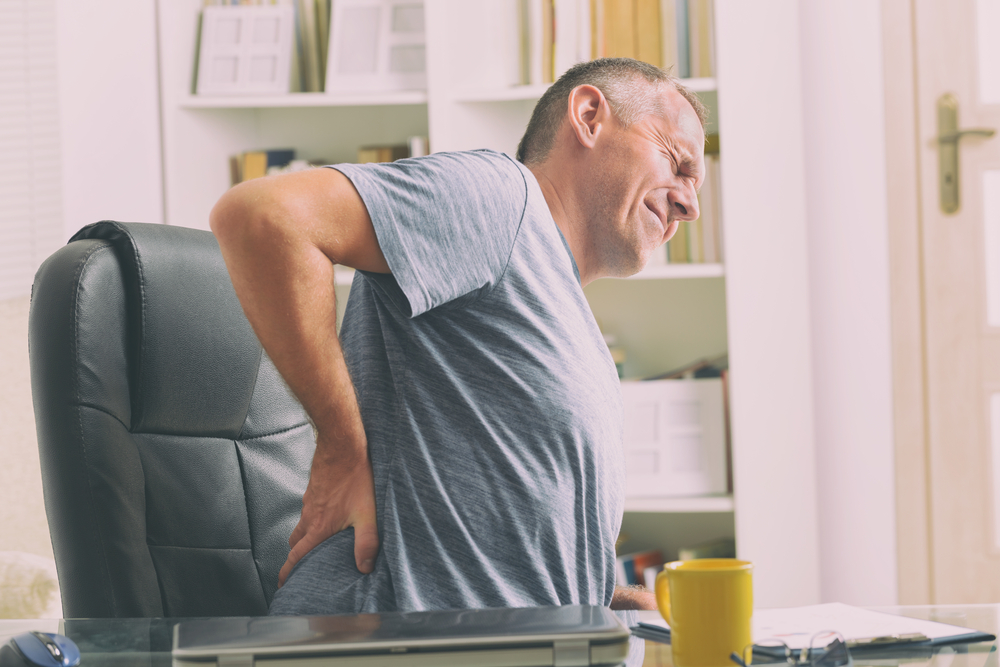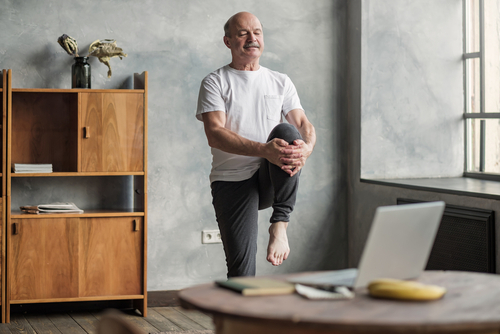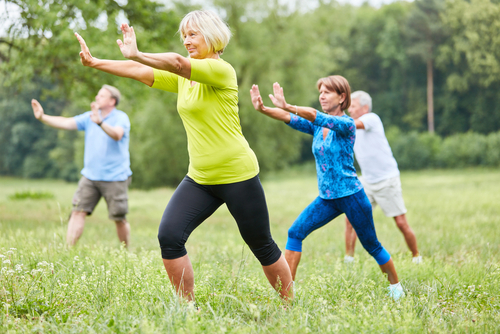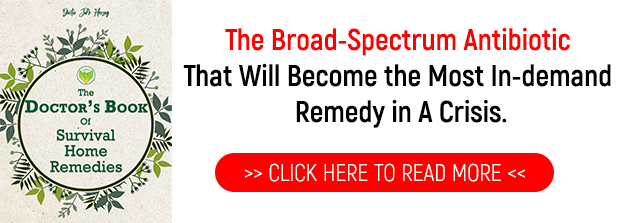The next read is an excerpt from “The Doctor’s Book of Survival Home Remedies”, Chapter: Pain, pages 238-239:
Pain has a tendency to take over every aspect of one’s life. In large part, this reflects the fact that it’s so difficult to manage. Learning one or a combination of some of the following tactics could help to save your sanity.
Inflammation and Movement
What can you do in this case? Try moving your body. That can be critical because increasing your circulation works to get rid of inflammation. It’s key because left unchecked, localized inflammation will start a ‘cascade of inflammation’. That’s when the pain becomes chronic.
If you are just laying around your home in pain, not moving, the pain will remain because you’re still full of inflammation. As difficult as it may be to move, everyone has their own range of motion. It’s the range within which any given part of your body can tolerate movement without screaming in agony.
Pay attention to yours, and respect it. Knowing your range of motion is important. From a standing position, find it by very slowly stretching your…
- …neck. Drop your head forward and roll it from side to side.
- …shoulders. Slowly lift them up, roll them forward, then lift and roll them backward.
- …back. Stand with feet at shoulder-width apart, slowly drop your chin to chest, then one vertebra at a time, roll down keeping your chin close to your chest. Go down as far as you can, keep legs straight, and try to touch the floor with your hands.
- …arms, hips, legs, ankles, and feet. Lift your limbs, hold them in the air, and move them in small circular motions. Move all except your hips one at a time. Hips move in sweeping circular motions–channel your Elvis Presley…or Michael Jackson.
>>> GET THE BOOK TO DISCOVER THE FULL CHAPTER <<<
Remember to just move within your range of motion. Let discomfort be your guide. As soon as you feel any discomfort or pain when you’re first trying to find your range, know that’s your limit.
Within your range, move your body intermittently every day. Even if it means getting off the couch every 30 minutes to walk to the kitchen for a glass of water or to look out the window. That may be all you can tolerate, so that’s OK.
Stretching can be very effective to alleviate some muscular pain. Take a look at PART II, Chapter 2 of this eBook for more information on stretching. But there are many types of stretches—maybe as numerous as the cells in your body! Just keep in mind that the type of pain you have determines what kind of stretch, if any, will relieve it. You may find what you need with a quick search on YouTube.
Acupuncture, originally from China, has been used for centuries in Asia. Practitioners insert needles at specific meridian points in the body, enabling endorphins to heal the body and activating serotonin to enhance your mood.
Research into the efficacy varies, but that may be because the treatment works for some people and not others. If you want to try it, we advise finding a qualified acupuncturist from the National Certification Commission for Acupuncture and Oriental Medicine [1].
Yoga is used by many people to manage pain. It’s effective in large part because it deeply engages the whole person with its equal emphasis on breath control and meditation for the mind, and stretching for the body. The beauty of the yoga trend is that you can find a class on nearly every street corner across North America. Or you can practice it at home with an instructional video, paid or free on YouTube.
Tai Chi, a slow, gentle movement said to be a “soft” form of Kung Fu and has been practiced in Chinese culture for millennia. Research suggests [2] it offers immediate relief from chronic pain due to osteoarthritis. That’s why Tai Chi is commonly practiced by middle-aged Chinese people around the world. Like yoga, you can learn it by going to classes or from videos.
Mineral baths can effectively manage pain. Even before adding minerals, simply soaking in warm water loosens joint in people with arthritis and fibromyalgia. It also lessens the force of gravity, which compresses joints, decreases swelling and inflammation, and improves circulation. For more benefit, add magnesium salts (known as Epsom salts). Magnesium is good for your bones and heart, and a soak can add 35% more [3] of this mineral to your magnesium levels.
Meditation can be very effective to alleviate pain, as observed by Alpert in the success story below. Meditation is so widely accepted in conventional medicine that some hospitals now have meditation rooms.
Mindfulness meditation, specifically, is shown in research to be effective in fibromyalgia-related pain relief. However, the analgesic mechanisms in the process of this type of meditation have not yet been identified. Knowing this key information will encourage doctors to more confidently recommend mindfulness meditation as an effective treatment for fibromyalgia-related pain.
A Success Story
Alpert from Tucson, Arizona expressed his view of meditation for pain relief on an online discussion thread, saying…
When I was at the University of Massachusetts, there was a young man named Jon Kabat-Zinn who was actually a DNA biophysicist who was a long life meditator.
He came to me one day and said, ‘you know, I’d like to try this. I hear that meditation can help with chronic pain.’ So eventually that led to Jim Dalen, who was the dean then and had a master’s degree in psychology.
With his agreement, we did an experiment in which he went to the orthopedists and said, “I want you to send me the patients that you hide under the desk from when you see them coming. The ones who have been operated on multiple times and all they are looking for are narcotics (for pain).”
He put them all through the meditation pain treatment program and there was a remarkably good response rate. A patient declared “I still feel the pain, but it doesn’t bother me as much…
Jon Kabat-Zinn is now retired professor emeritus of medicine. He created the Stress Reduction Clinic and the Center for Mindfulness in Medicine, Health Care, and Society at the University of Massachusetts Medical School.
He still lectures on mindfulness living and has written many books on the subject. One of those, Full Catastrophe Living: Using the Wisdom of Your Body and Mind to Face Stress, Pain, and Illness [4] is about his work in mindfulness meditation to treat stress, pain, and illness.
>>> GET THE BOOK TO DISCOVER THE FULL CHAPTER <<<
It is forbidden to replicate any of the above content without Dr. John Herzog’s consent. However, in order to support the discounts and donations we’re making, we depend on free advertising. The doctor needs your help in sharing this with the world.
Resources
[1] http://www.nccaom.org/
[2] https://www.ncbi.nlm.nih.gov/pmc/articles/PMC4850460/
[3] https://www.arthritis.org/living-with-arthritis/pain-management/tips/warm-water-therapy.php
[4] http://mindfulness-meditation.myshopify.com/pages/books-by-jon-kabat-zinn#catastrophe
























































































Thankyiu so much for giving me this valuable, (possibly life changing) advice fir free. So many doctors etc start their post by saying that they simply want to tell everyone a secret that will help them get rid of their pain and then., ten minutes later, they try to sell you something. You have shared really good advice freely and I am so pleased that you did. I have sat around too much but won’t now.